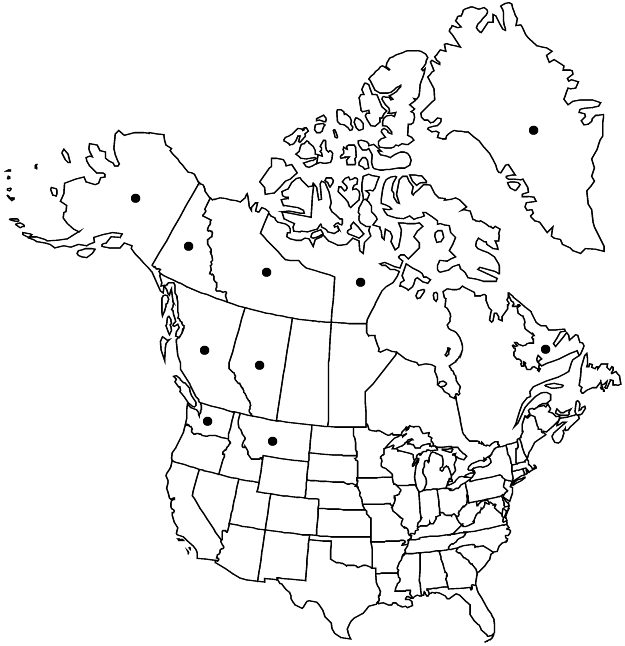Cassiope tetragona
Edinburgh New Philos. J. 17: 158. 1834 ,.
Stems decumbent to erect, forming dense mats, hairy. Leaves closely imbricate, usually appressed to pair above, usually 4-ranked (decussate); blade narrowly triangular, dorsi-ventrally expanded marginally forming abaxial groove, 3–6 × 1–1.5 mm, margins thin, without curled hairs at leaf tips, surfaces with short, stiff pubescence. Flowers: sepals 2–3 mm, margins entire; petals connate to 2/3 their lengths, tips spreading to recurved, corolla white to yellowish, cylindric, 4–10 mm; stamens 2 mm. Capsules 3–5 mm. 2n = 26.
Distribution

Alta., B.C., N.W.T., Nfld. and Labr., Nunavut, Yukon, Alaska, Mont., Wash., Eurasia.
Discussion
Subspecies 2 (2 in the flora).
The Arctic plants of Cassiope tetragona all belong to subsp. tetragona, which is partially replaced by and partly sympatric with subsp. saximontana in northern Cordilleran areas of western Canada, Alaska, Montana, and Washington. The latter differs in pedicel length relative to leaf length and the length of the corolla.
Arctic white heather has traditionally been used by the Inuit for lighting fires. Some Inuit call it itsutit, meaning “fuel for the fire,” plantiksutit, or qijuktaat, meaning “wood fetched.” The flowers are said to taste awful (I. Ootoova et al. 2001).
The subspecies of Cassiope tetragona can generally be distinguished by the characters in the following key. The ranges overlap in Alaska and Yukon, and some collections from this region may prove problematic to assign to either subspecies.
Selected References
None.
Key
| 1 | Pedicels extending beyond branch tips, 10+ mm, usually 3+ times leaf length, elongating in fruit; corollas 6-10 mm. | Cassiope tetragona subsp. tetragona |
| 1 | Pedicels not extending beyond branch tips, to 8 mm, usually to 3 times leaf length, not elongating in fruit; corollas 4-6 mm. | Cassiope tetragona subsp. saximontana |